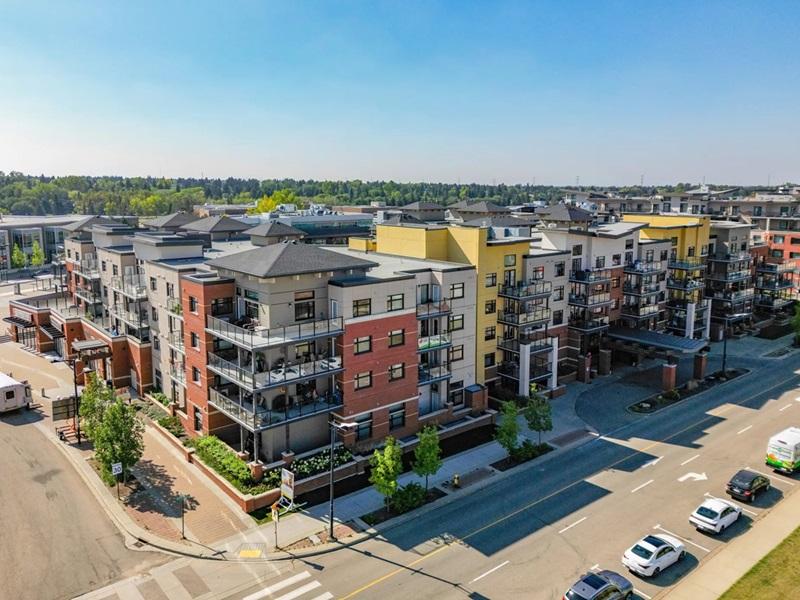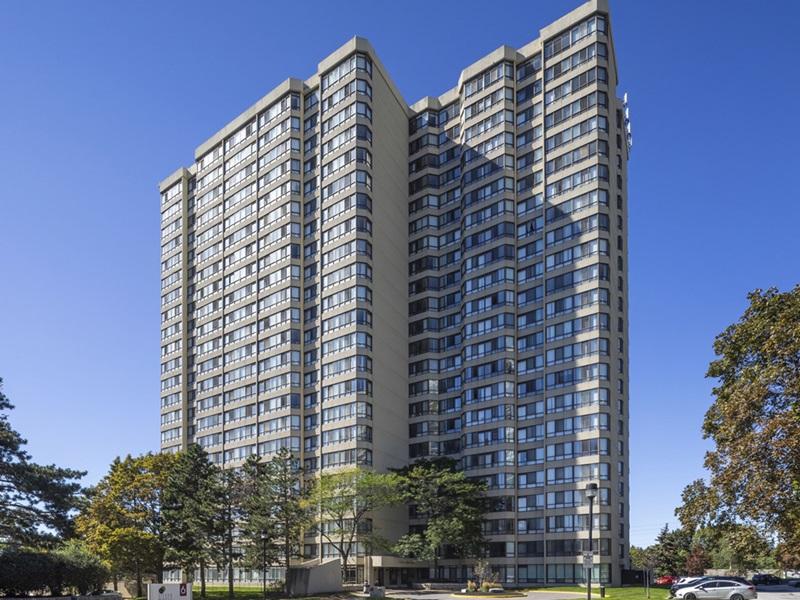 After cutting its distribution in half, and paring the IFRS value of its assets by about $1.3 billion, H&R REIT chief executive officer Tom Hofstedter believes the trust has positioned itself for virtually any eventuality created by the COVID-19 pandemic and a resultant crash in oil and gas prices.
After cutting its distribution in half, and paring the IFRS value of its assets by about $1.3 billion, H&R REIT chief executive officer Tom Hofstedter believes the trust has positioned itself for virtually any eventuality created by the COVID-19 pandemic and a resultant crash in oil and gas prices.
The measures were announced as part of H&R’s Q1 2020 financial results. Hofstedter and other senior managers expanded on their decisions during their quarterly conference call with analysts.
“Our approach has always been that for our IFRS fair value to be meaningful it needs to be responsive to changing market dynamics and as objective as possible,” Hofstedter explained. “This quarter included a significant reduction in fair value, reflecting both retail headwinds and energy sector challenges.
“Some may argue that there haven’t been enough transactions to be able to confer any change in values; our valuation team have concluded that while this may be true, both the retail and energy sectors had been struggling prior to the pandemic and it is reasonable to expect those trends at the very least to continue. In reality, they have accelerated.”
H&R REIT’s property writedowns
The writedowns are concentrated on its retail and Alberta office properties. H&R REIT’s (HR-UN-T) total asset value is now estimated at $13.4 billion.
Chief financial officer Larry Froom said about $660 million of the writedown is attributed to the REIT’s retail properties; $680 million to its office assets including TransCanada Tower and The Bow in hard-hit downtown Calgary.
Hofstedter said discussions about the REIT’s distribution have occurred several times in recent years. The decision to reduce it from $0.115 per unit to $0.0575 ($0.69 per unit annually) “was not an easy one.”
“Our payout ratio has been on the high end of the range,” he said. “Management and the board have been balancing objectives of, 1) reducing the payout ratio, with 2) recycling capital into higher-growth assets and other short-term options which improve the quality of the REIT.”
In opting to halve the distribution, he said management wanted to err on the side of caution, preserving sufficient capital to ride out even pessimistic projections of the pandemic and energy sector woes, and giving it the ability to capitalize on opportunities which might arise: “We can always increase it again.”
(We) wanted to be sure our new distribution was set at a level that would be sustainable with all the scenarios we considered,” he said. “Tough times lead to tough decisions, but we are confident we made good decisions that will benefit our unitholders.”
Q1 2020 financial performance
Although H&R REIT did experience a decline in property rental revenue ($279 million from $298 million in Q1 2019) and property operating income ($140.6 million from $153 million) this is mainly attributed to its buying and selling activity during the past year.
“We view this as quite an achievement given that we’ve completed approximately $1 billion in asset sales over the past 15 months, compared to approximately $206 million of property acquisitions during the same period,” Froom said.
Same property operating income rose slightly from $191 million in Q1 2019 to $193 million this year. However, the 2019 figure included $5.9 million in lease termination fees compared to only $0.2 million this year. Excluding those fees, same property income rose four per cent.
FFO per unit dipped from $0.46 to $0.45, but AFFO rose a penny per unit to $0.40.
H&R’s net asset value per unit was $22.26 at the end of Q1 2020, compared to $25.89 a year earlier.
Developments, other H&R REIT news
Although developments not already under construction are now on hold, H&R is continuing to build a 343,000-square-foot industrial project in Caledon (just outside Toronto). It is leased to DeutschePost, with occupancy scheduled for late 2020.
Its Lantower residential subsidiary is continuing the leasing of Jackson Park on Long Island, N.Y. The firm is also working on several other projects:
* pre-leasing at The Pearl in Austin, Texas, is to commence in August for late 2020 occupancies;
* pre-leasing is to begin by the end of this year at Nightingale in Seattle, with occupancy starting in Q1 2021;
* virtual lease-up has begun for Phase 1 of Hercules in San Francisco, with Phase 2 having just started construction;
* and construction continues on Shoreline Gateway in Long Beach, Calif., for summer 2021 occupancies.
Lantower also took a $1.7-million loss on a planned acquisition in Orlando. It has walked away, at least for now, from a deal to purchase a new multifamily development in the Kissimmee area, citing the impact of the virus on Florida’s tourism industry and overall economy.
“Quite honestly, given what we had seen coming down the pipe . . . we thought it would be much more judicious to simply (let the deal) fail,” Lantower COO Philippe Lapointe said.
Lantower has done several previous deals with the builder, so Lapointe said he expects the transaction could be revived if, or when, conditions improve.
Lapointe said rent collections at Lantower’s properties have been strong; 97 per cent in April and 93 per cent by mid-May.
Primaris retail performance
H&R REIT’s retail arm, Primaris, had been tracking for a strong 2020, according to COO Pat Sullivan, with same-property sales up from $549 per square foot from $545 just two months earlier, and several new retailers either open, or poised to open, in redeveloped Sears boxes during the coming months.
Primaris’ malls were beginning to reopen, but both Lapointe and Hofstedter said significant challenges will remain in that sector.
“We expect that in addition to rent deferrals, there will also be abatements which is a requirement of the government program for small business,” Lapointe said.
“We fully anticipate there will be retail failures as a result of this pandemic and there are significant concerns among retailers regarding sales volumes returning over the balance of the year.”
The good news is that, with a high ratio of “essential” and needs-based retailers in its retail properties, Primaries has collected higher portions of expected rents than some other operators.
During April, it collected 40 per cent from its enclosed mall tenants and 88 per cent from other retail tenants. Through mid-May, those figures were 30 per cent and 80 per cent, respectively.
Moving ahead, Hofstedter said he expects longer-term fallout from the pandemic.
“I do believe that rental rates will be coming down, but I believe our rental rates with Primaris will be coming down less than the high-end malls quite frankly, because as Pat has mentioned we are primarily the only mall in the (various) marketplace(s).”
H&R considers investment partner offers
Lapointe also opened the door to working more often with co-investors via Lanterra’s apartment platform.
“The last few years we’ve been approached by strategic investors, mostly consisting of pension funds, gauging our interest in leveraging our Lantower platform and expertise into co-investing,” he said.
“We are now closely examining those opportunities with the ultimate goal of creating an asset management platform within Lantower, wherein our strategic investors would co-invest significant capital alongside our seed capital.”
He did stress, however, “in no case would it be a major capital investment on our behalf. At the end of the day the reason why we’d be doing this is to lever the platform, not to lever our capital.”







